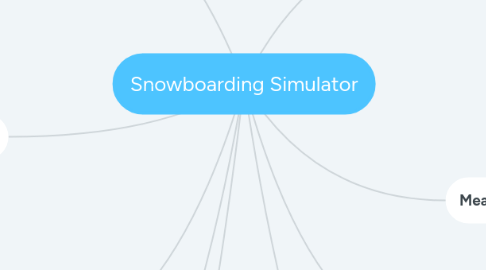Snowboarding Simulator
by William G


1. Easy to Maintain
1.1. Cleaning Requirements
1.1.1. Non-porous materials
1.1.2. Smooth surfaces
1.1.3. Rounded corners
1.2. Repair Requirements
1.2.1. Assembly instructions
1.2.2. Parts list
1.2.3. Low-cost materials
1.2.4. Use manufacturing processes WRNMMC currently has access to
2. Allow Heel-to-Toe Motion
2.1. Track
2.2. Pivot
2.3. Halfpipe-like base with wheels connected to snowboard
2.4. Springs
2.5. Elastic
2.6. Slippery platform
3. Resist Snowboard Motion
3.1. Elastic
3.2. Spring
3.3. Motor
3.4. Magnet
3.5. Dampers
4. Setup and Dismantle Project
4.1. Locations
4.1.1. Sides of moving platform
4.1.2. Safety harness supports
4.2. Methods
4.2.1. Telescoping parts
4.2.2. Pins for locking positions
4.2.3. Clamps
5. Realistic Snowboard Motion
5.1. Fast response time
5.2. User speed control
5.3. Accurate snowboard motion resistance
5.4. Reliable sensors
5.5. Adjustable snowboard motion resistance
5.6. Sloped tradmills
6. Detect Snowboard Rotation
6.1. External Sensor
6.1.1. CAREN Motion Capture System
6.1.2. CAREN Force Plates
6.2. On-board Sensor
6.2.1. Gyroscope Sensor w/ Integrator
6.2.2. Incremental Rotary Encoder
6.2.3. Camera System
6.2.4. Ultrasonic Sensor
6.2.5. Digital Angle Finder
6.2.6. Magnetic Field Sensor
6.2.7. String pot
